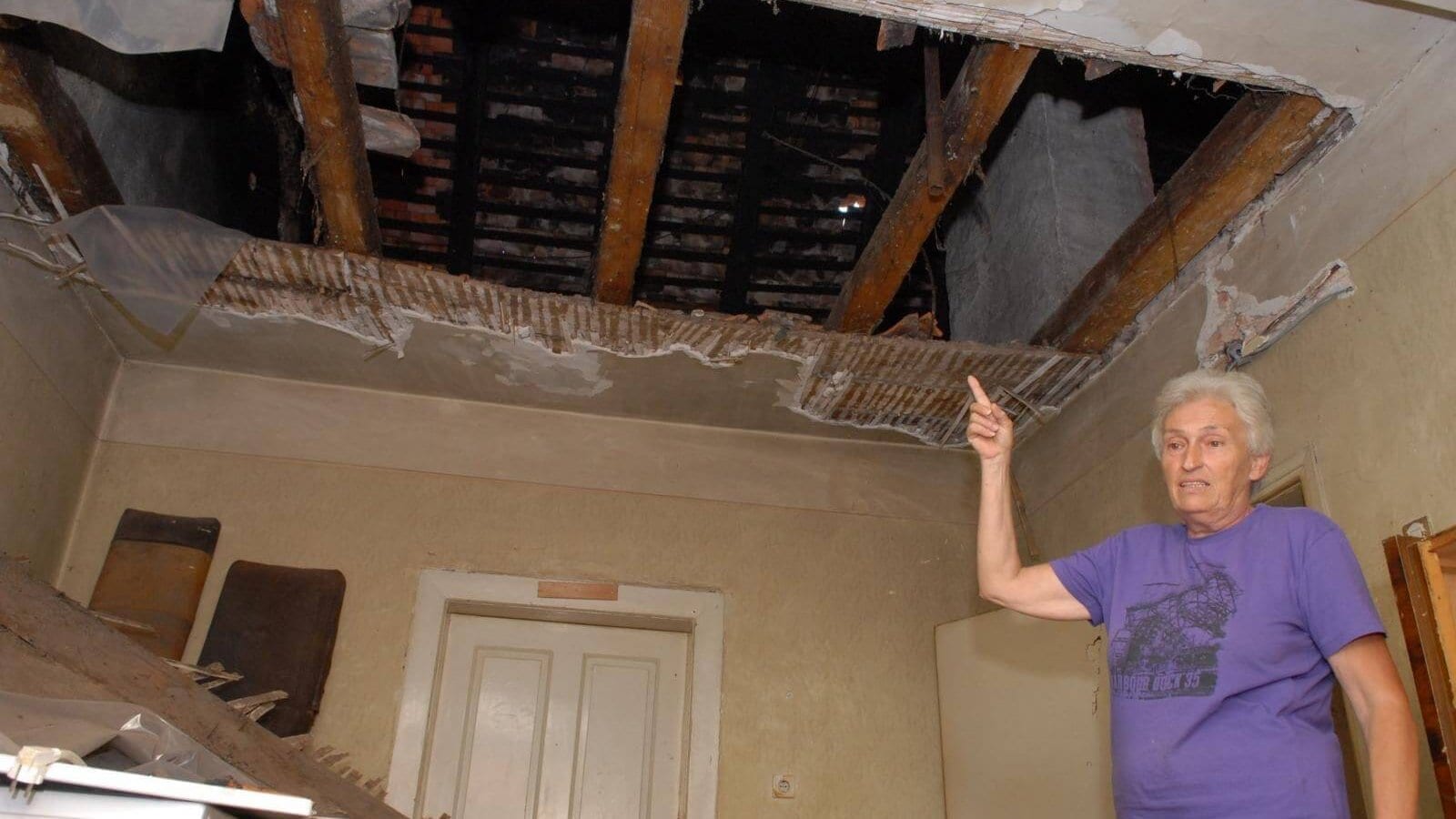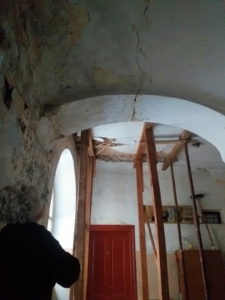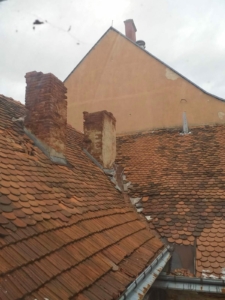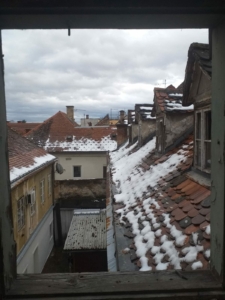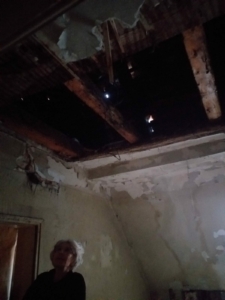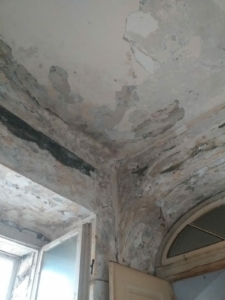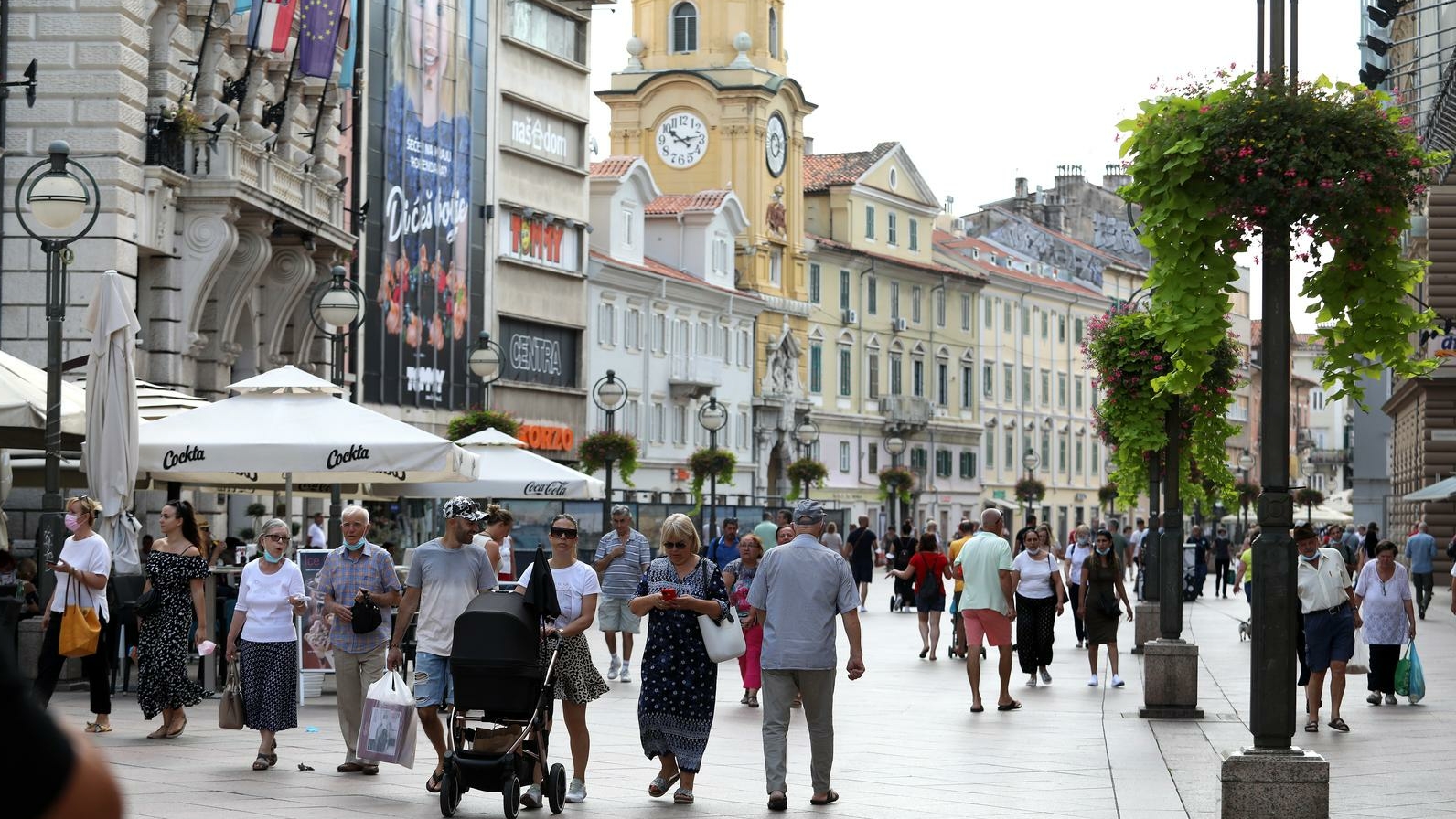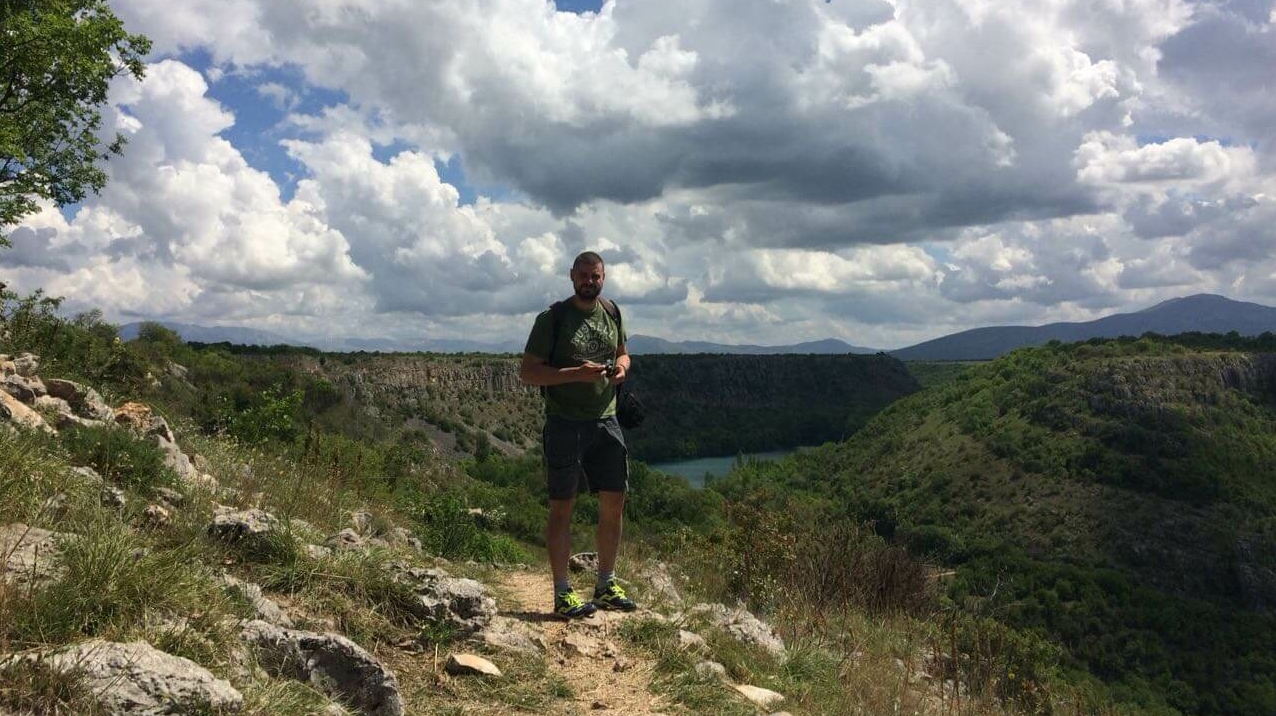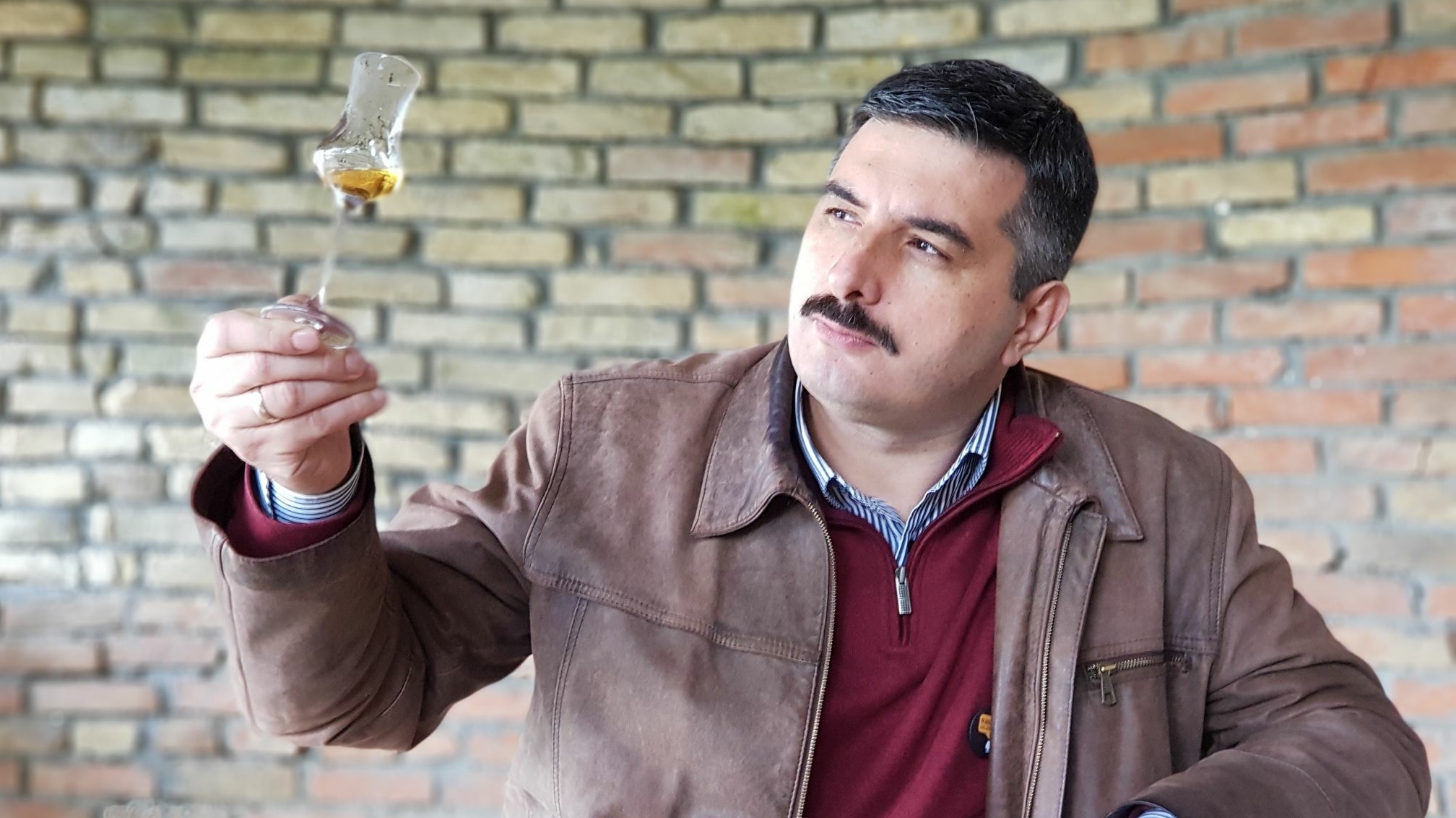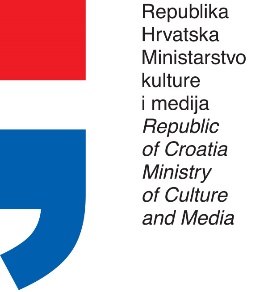“The last time we were photographed, in bad weather, my grandson, who is now twelve, was little – I held him in my arms,” Ana Milašinović from Karlovac explains why she is in no mood for photos while showing us her house in the city center. The house is a cultural monument – established in documents, in literature from the fields of history and art history and in collective memory – that is on the verge of crumbling down on the tenants’ heads.
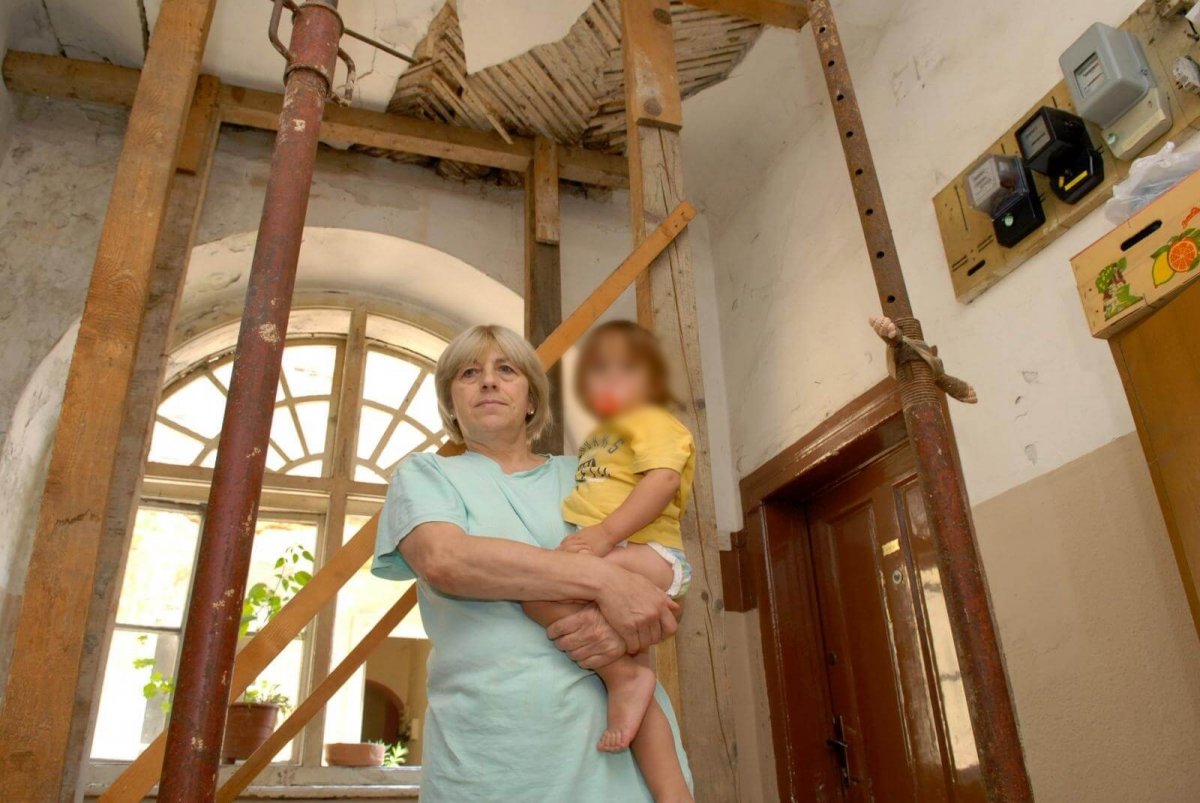
Although a quick inspection found it temporarily unfit for habitation, the tenants have not left it because they have no alternative.
The recent earthquakes additionally shook the already decaying building – bricks and roof tiles fell out, firefighters had to remove chimneys, and the tenants say that water now comes through them into the building. “One more earthquake and – I am gone,” says Danica Kern, who lives in the attic apartment of this building in Radićeva Street in Karlovac. The building’s architect was the renowned Bartol Felbinger, the most famous builder of old Zagreb, as the cultural public calls him.
Relevant literature states that the buildings which stand out among his documented and finished works are the building at 15 Jelačić Square (from 1827), the school building at 22 Opatička Street (from 1839) in Zagreb, the municipal hall in Samobor (built between 1824 and 1826) and the additional construction of the spa building in Varaždinske Toplice (in 1820).
A building rich in history and – print
Surviving sources and testimonies tell us that the building has a very rich history. In his book Old Karlovac – Streets, Houses, People from 2010, Radovan Radovinović writes that the building is also connected to some controversies, such as the question of whether the printing house of Ivan Nepomuk Prettner was located there. Referring to some contradictory sources – seeing that on February 17, 1847, Prettner stated in the newspaper Pilger that his bookstore was in Reichertzer’s house “in der Hauptstrasse” – Radovinović states that the bookstore could have been in this or the adjacent house, which was at the time also Reichertzer’s.
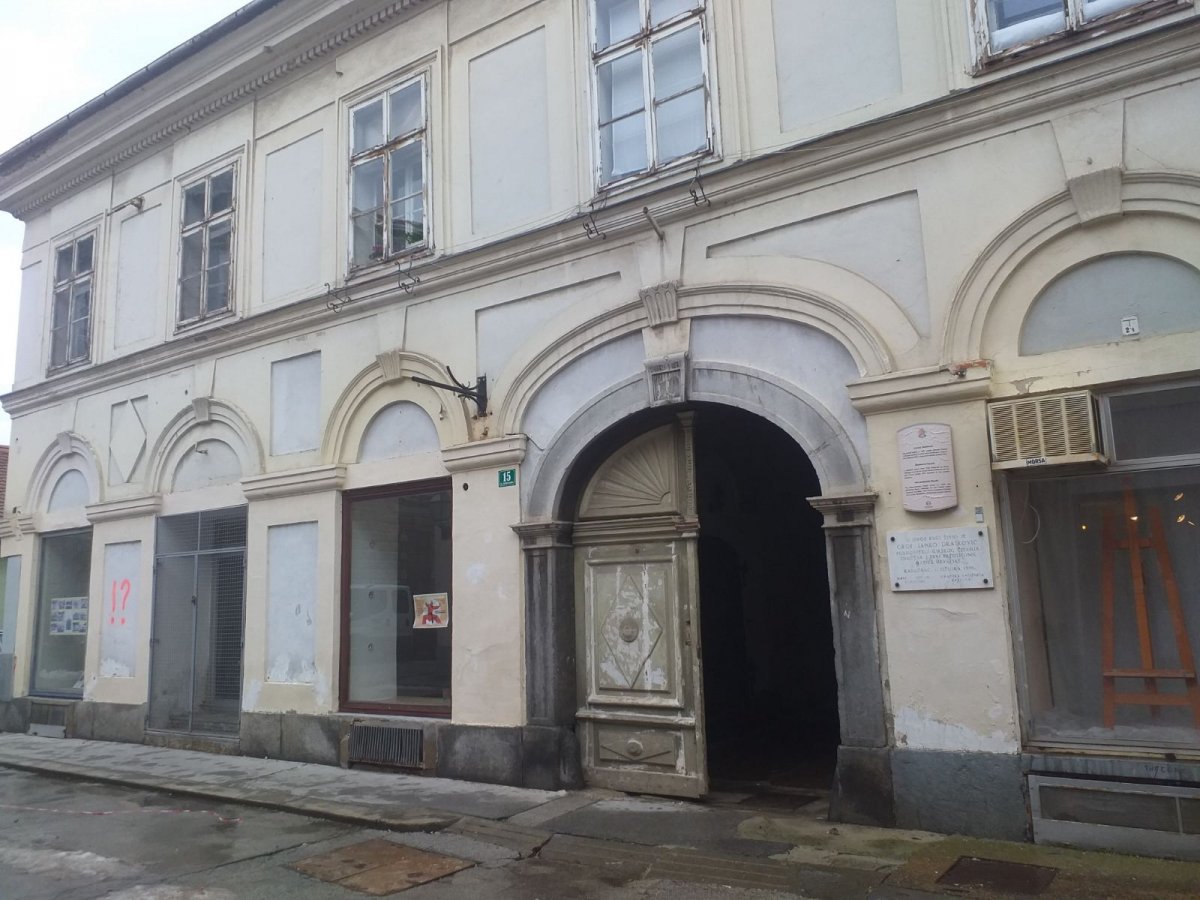
“Prettner’s printing house printed orders, regulations, prayer books, books, and, for a time from 1848, banknotes. In 1823 it printed the first book in the Croatian language, Almanah ilirski (The Illyrian Almanac) by Juraj Matija Šporer, followed by Dissertation by count Janko Drašković in 1832, The Topography of Karlovac Military Frontier by Franjo Julije Fras in 1835, Domorodna poviest by Dragojla Jarnević in 1843 and the text Hervati Magjarom by Ivan Mažuranić in 1848. From 1841 to 1848 it printed and published the German-language newspaper Der Pilger, which frequently published poems and various announcements and notices in Croatian, then Karlovački viestnik and between 1884 and 1888 Svjetlo, whose chief editor was Dušan Lopašić,” Biserka Fabac lists the most important printed works in an essay in the internet photo archive of Karlovac „Kafotka“.
The pearl of Karlovac architecture
This house, the Drašković Palace, is considered the most significant classicist building in Karlovac. “It is a representative and one of the most beautiful examples of classicism in the architecture of Karlovac, with a front of harmonious proportions divided by characteristic lunettes, owned by notable historical figures and, later, by citizens of Karlovac,” states the state registry of cultural heritage where this building is registered. Precisely – a protected house threatens unprotected residents.
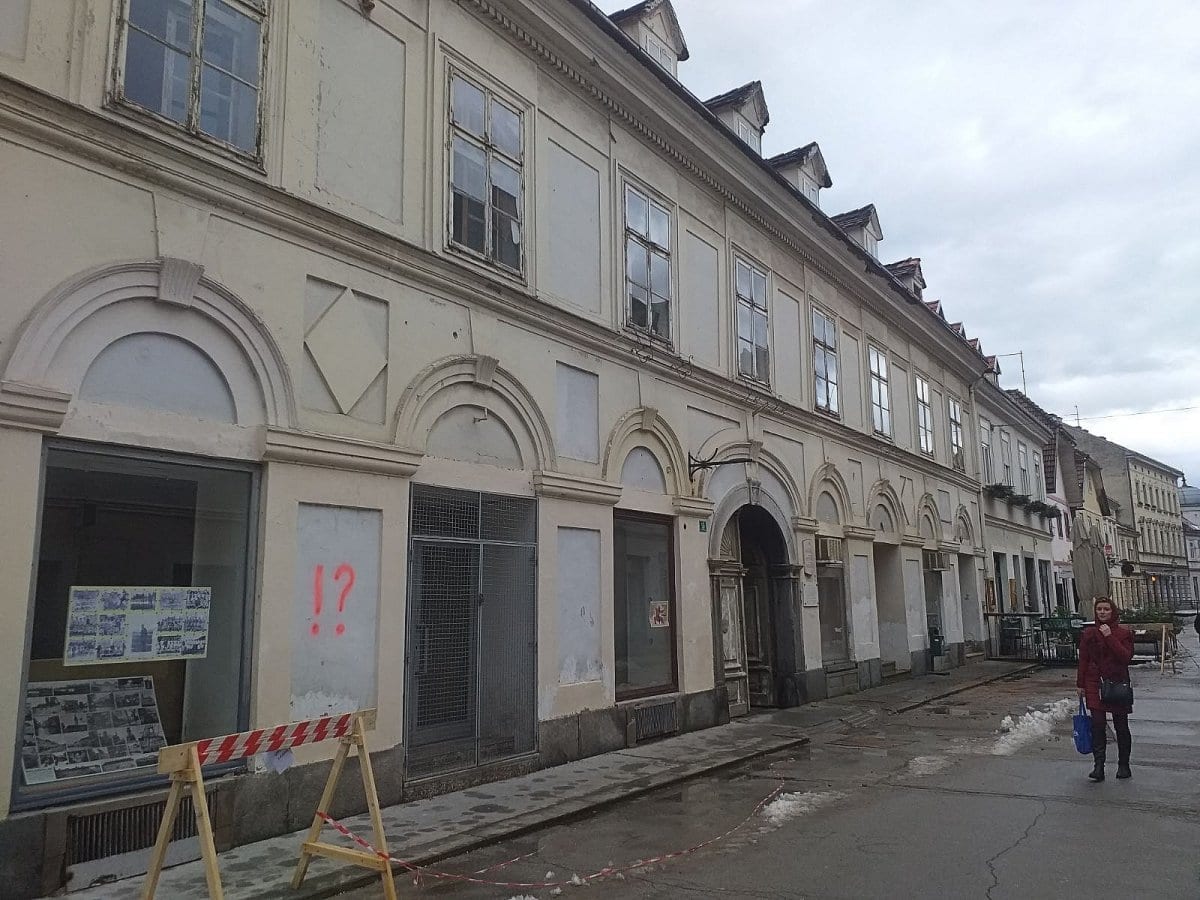
“With the growth of population and new changes in the urban plan, such as laying new communication paths, the Karlovac fortress slowly begins the process of change, but without disturbing the height balance of the city’s buildings. Until the middle of the century, one-storey houses in the classicist and Biedermeier styles with simple, articulated facades were built; among them house Drašković especially stands out. The first changes that heralded the disruption of the harmony of the old town and its gradual disintegration came in the middle and especially at the end of the 19th century. One of the important changes of the second half of the century was the laying of the railway line. Commerce, which until then depended solely on the Kupa waterway and the roads, switches to a faster and cheaper means of transport. The traditional trade route, needing to adapt, slowly dwindles. Karlovac remained an important trade center for the wider region, especially due to its many trade fairs, but gradually it turned more and more towards industry, which became the backbone of the economic development of Karlovac in the 20th century,” art historian Matej Mihalić explains the context of building in that period in his master’s thesis New Spatial Identity of Karlovac, defended in 2018 at University of Zagreb’s Faculty of Humanities and Social Sciences.
The City of Karlovac makes promises, but behind closed doors
Last week Ana Milašinović explained the problem to Mayor Damir Mandić, and it can be summarized in her brief statement: “Whenever a stronger wind blows, something falls.”
She reveals to us that the mayor said he would order serious examination of the statics of the building and that the City of Karlovac will endeavor to set in order the property-legal issues.
Those issues often served as an excuse for keeping the building in its existing state, if we may call it that, for due to continuing decay, neither this state can be maintained. Ana Milašinović invited us to a meeting of the city government, but on coming there, we were asked not to attend since citizens’ personal problems would be discussed, despite the fact that we were invited by a citizen. We were asked to request information in writing. In any case, we are still waiting for the City’s response to our inquiry about the outcome of the meeting.
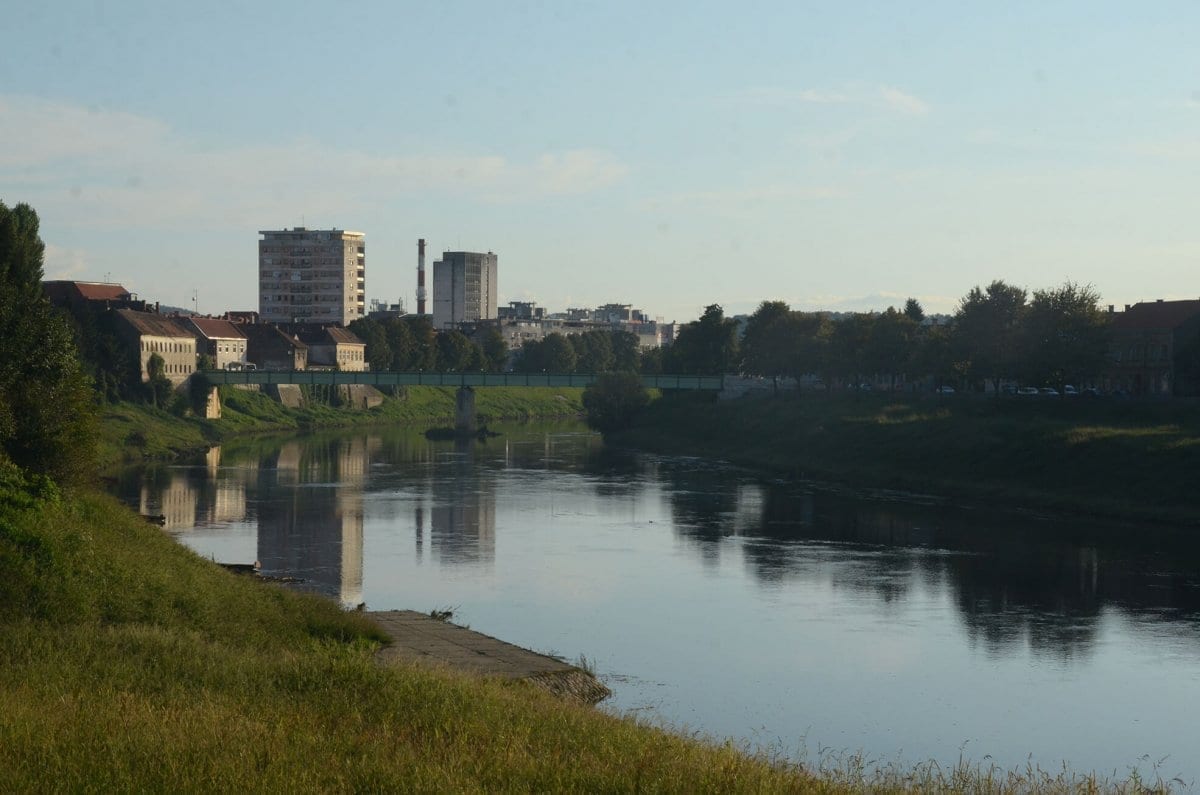
Three successful and one unsuccessful demolition
“The building was blasted with explosives several times – the case is still in court. For one attempt I was not able to prove that the state was responsible although members of the army and police did it. Explosives were first set off at the clothing store, then at my father’s shop, twice at my business premises and then at the video-store of football player Željko Janjanin. There was one unsuccessful demolition. I slept behind the unexploded device. One device ‘opened’ the shelter where we took refuge – it made a hole,” says Ana Milašinović.
As a prominent Serbian family, the Milašinović family was the target of nationalist bombings during the Homeland War, and Ana believes that their plight was part of a campaign organized by the state.
A center of the Illyrian movement
The carved initials and the year on the portal, “JFD 1828”, testify that the house belonged to Janko and Franciska Drašković. Count Janko, one of the most prominent Illyrians, lived in nearby Rečica, where his family had a large estate. In Karlovac he wrote and in this building he printed his Dissertation, the political, economic and cultural program of the Illyrian movement, at the time when the most renowned Illyrians – among them Ivan Mažuranić, who wrote The Death of Smail-aga Čengić there – were active in Karlovac. For this reason Karlovac was named the most patriotic city.
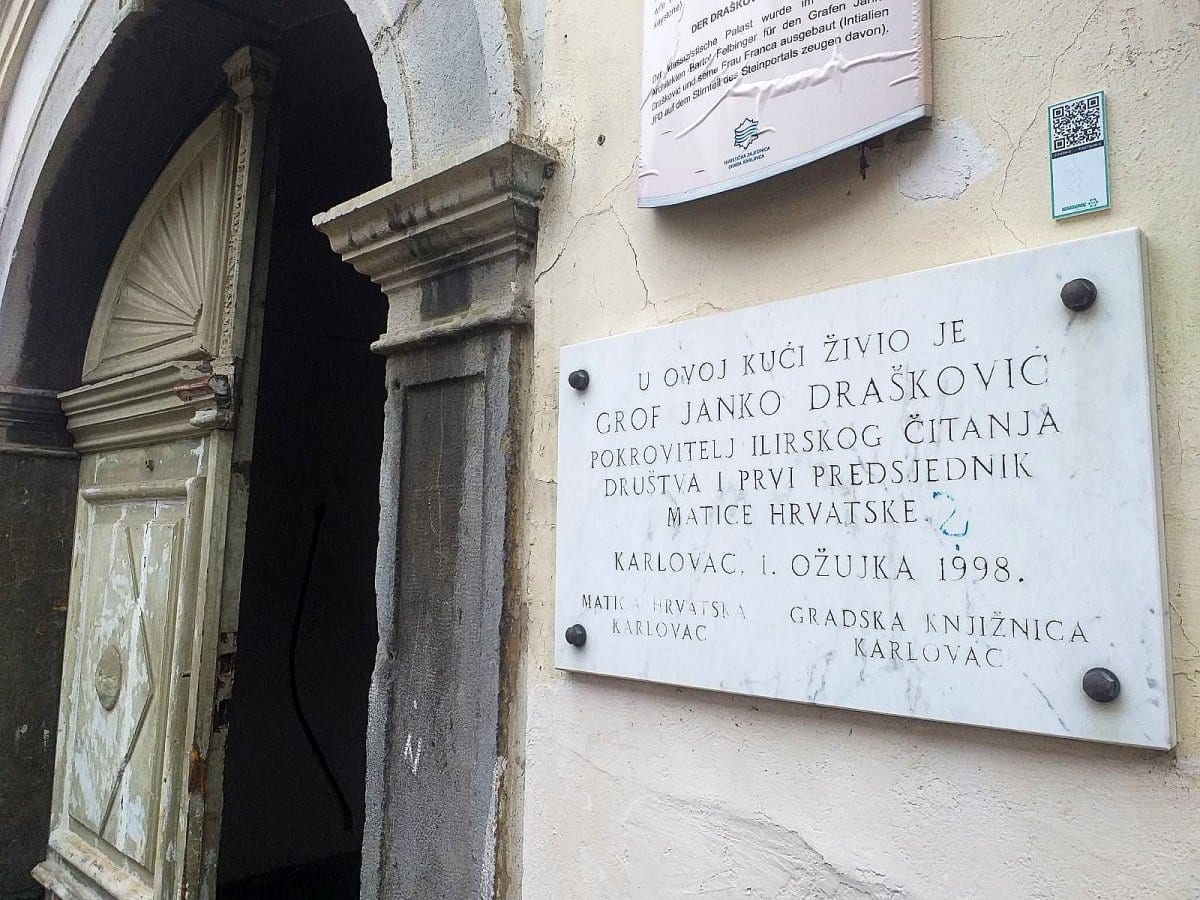
After Drašković sold the building, the owners changed several times; among them was the aforementioned Ivan Reichertzer, and in 1937 Ana’s grandfather, Dragan Š. Milašinović, became the owner.
Instead of restitution – repurchase of their own house
“People moved in, sold the house…,” Ana starts to explain the property-legal problems she believes were intentionally created. “It is no longer clear whose property it is,” she adds indifferently after several decades of fighting for her family’s property.
The house was the property of her grandfather until 1962, when it was denationalized. He requested denationalization since he had seven children. When he died, his son and Ana’s father, Boško Milašinović, continued the request for the restitution of property. As soon as the Law on Compensation for Property Confiscated during the Yugoslav Communist Rule was passed after the war, Ana restarted the process in 1996.
During the nationalization poor people were settled in the building – there were five tenants in the attic apartment,” she says, adding that the tenants constantly changed.
“My family was left with the room which used to be the laundry drying room. We also had an apartment which we couldn’t enter. Then we started buying back our own house. My father opened a watch and clock shop by partitioning the space with plywood panels – one half was his shop, and in the other half we lived. After that he continued buying back space in order to build an apartment for my brother in the yard, and for himself, where later our pizzeria was located. After that we exchanged rooms with others, and with one exchange we got my current apartment. I have a whole ‘office’ full of documents concerning the return of our property. Instead of giving back the property, the City of Karlovac sold it. There were various probate proceedings afterwards, resulting in fourteen owners in the end,” she adds.
The earthquake finished what had already been crumbling
She sees this role of the City of Karlovac as the key problem. “The City sold some parts of the property, despite the ban, and returned to us the dilapidated and destroyed ones. They didn’t remunerate us or ask us anything. According to a study from some ten years ago, 7 million kunas is necessary for the roof, windows and doors, plus the conservator’s requirements. I even just requested the materials, so that we can make the new roof ourselves, but without success,” Ana Milašinović says.
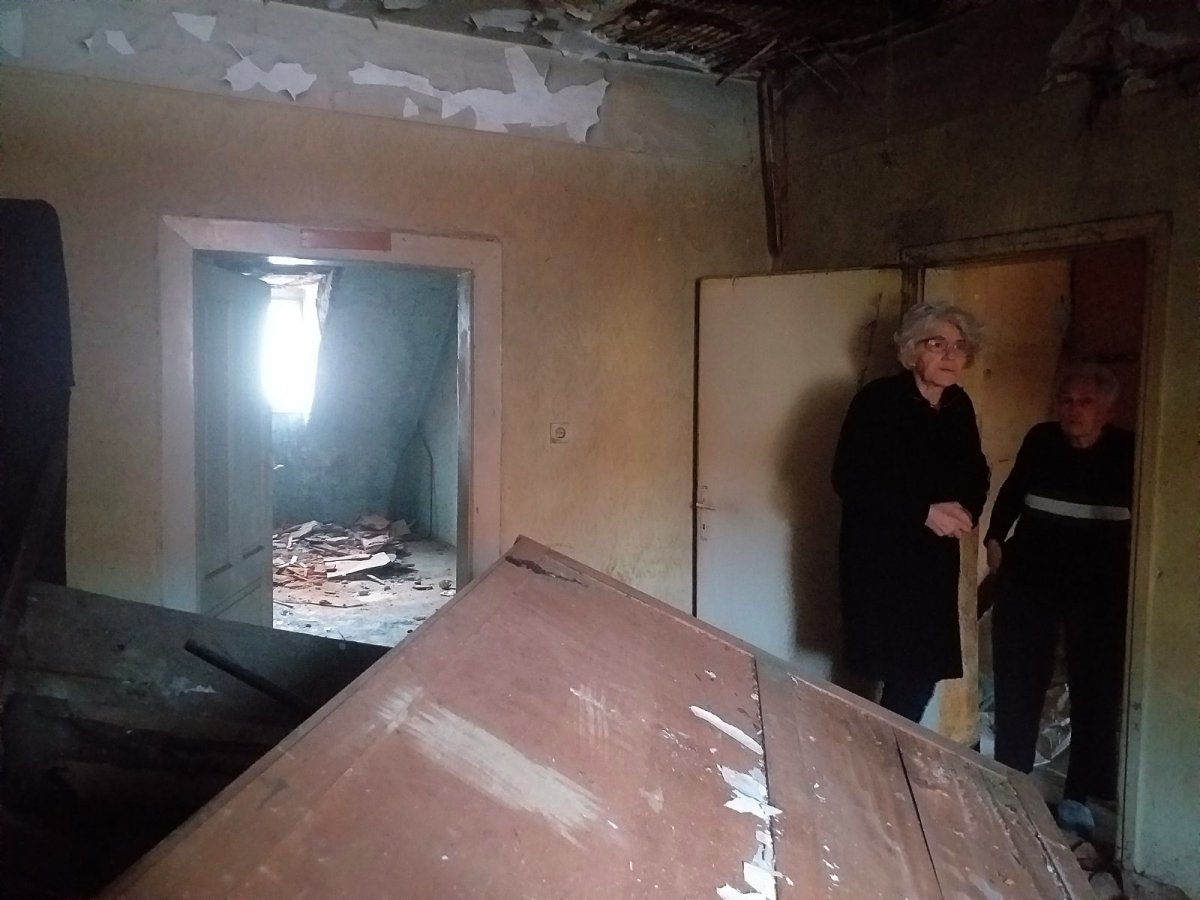
“If the City returns the property to us, we will take out a mortgage loan. One of the tenants, to whom the apartment was unlawfully sold, already took out a mortgage on his property, but I can’t do that with my own since I am only one of the owners. We can’t maintain the building without the conservator’s permission. The demolition attempts damaged the roof and the chimneys, and then there was a storm… The last earthquake finished what had already been crumbling. The firefighters tore down the chimneys. Everything’s leaking through them. The roof and the windows and doors need to be changed,” she concludes going down a dilapidated staircase where a few years ago she fell and damaged her spine, almost becoming disabled.
Translation from Croatian: Jelena Šimpraga
***
Follow up P-portal on Social Networks:

